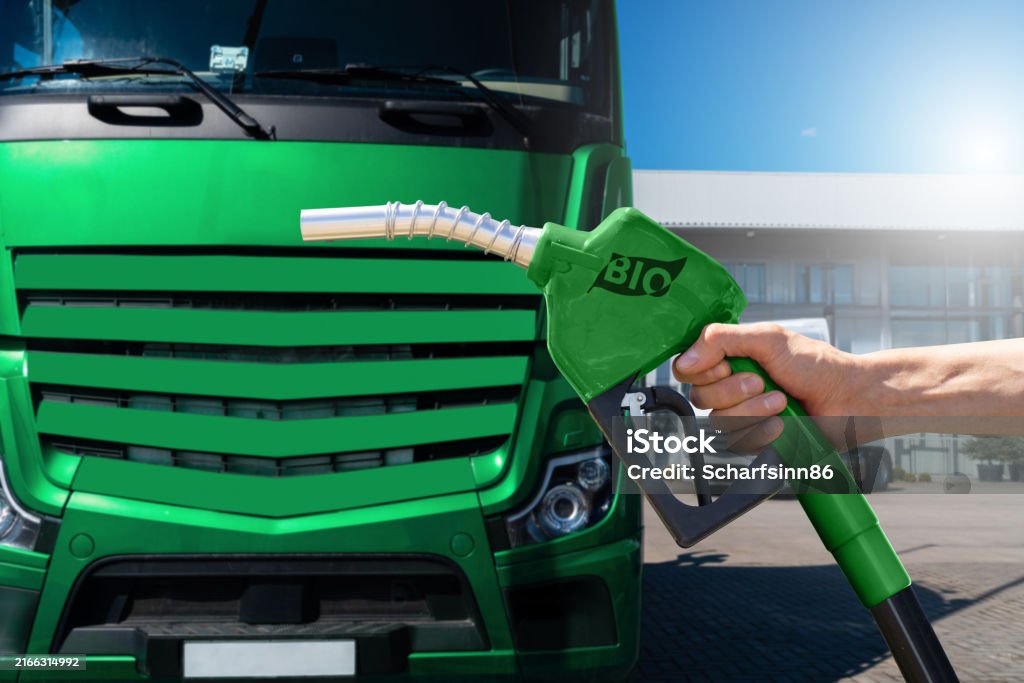News
Fuel Efficiency of Utility Trucks Under Load

When considering a utility truck for work purposes, one of the most important factors to evaluate is its fuel efficiency, especially under load. Utility trucks are often tasked with carrying heavy loads, making fuel consumption a critical concern for businesses or individuals who depend on these vehicles for daily operations. Whether you’re hauling construction materials, tools, or any other heavy cargo, understanding how a truck performs under load can save you significant money in fuel costs over time. If you’re looking for utility trucks for sale in West Covina, CA, it’s important to understand how different models and engine types impact fuel efficiency, particularly when the truck is carrying a load. This article will guide you through the factors that affect fuel efficiency in utility trucks under load and how you can choose the right one based on your specific needs.
What Affects Fuel Efficiency in Utility Trucks?
Several factors impact the fuel efficiency of utility trucks, especially when they are operating under load. These factors include engine size, the weight of the load, the type of transmission, and the driving conditions. Let’s take a closer look at each of these elements to understand how they contribute to fuel efficiency.
Engine Size and Power
The engine size of a utility truck plays a significant role in its fuel efficiency. Trucks with larger engines are typically designed for heavy-duty tasks and, as a result, consume more fuel. However, larger engines provide more power, which is necessary when hauling heavy loads. On the other hand, trucks with smaller engines are generally more fuel-efficient but may not be suitable for towing or hauling larger loads effectively.
For example, a utility truck with a 4-cylinder engine will generally have better fuel efficiency than one with a V6 or V8 engine, especially when driving empty or with light loads. However, when fully loaded, the smaller engine may struggle to maintain optimal power, which can result in slower acceleration, strain on the engine, and potentially lower fuel efficiency due to the extra effort required to carry the load.
Load Weight
The weight of the cargo being carried is a significant factor in determining fuel efficiency. The heavier the load, the more fuel the truck needs to carry it efficiently. When a utility truck is loaded, the engine works harder to maintain speed and handle the weight, leading to increased fuel consumption.
A fully loaded utility truck will typically experience a reduction in fuel efficiency compared to an empty one. For example, if you load the truck with tools, equipment, or other materials, you can expect the truck’s fuel efficiency to decrease due to the increased strain on the engine and the additional weight that the vehicle needs to move.
Transmission Type
The type of transmission in a utility truck also plays a significant role in fuel efficiency, especially when the truck is under load. Trucks with manual transmissions may offer better control and fuel efficiency, as the driver can shift gears based on the load and driving conditions. On the other hand, automatic transmissions are generally more convenient and easier to use but can sometimes result in higher fuel consumption, particularly when towing heavy loads.
Modern trucks with automatic transmissions are often equipped with features like overdrive and torque converters, which can help optimize fuel efficiency while under load. These features allow the truck to shift into higher gears more efficiently and prevent the engine from overworking.
Driving Conditions
The driving environment and conditions can significantly affect fuel efficiency, especially when hauling heavy loads. Trucks that are used primarily in urban settings, with frequent stops and starts, will experience lower fuel efficiency than trucks driven in more rural or highway settings, where steady speeds can be maintained.
For instance, driving in stop-and-go traffic with a heavy load requires frequent acceleration and deceleration, which can burn through fuel quickly. In contrast, driving on highways, where the truck can maintain a constant speed, is much more fuel-efficient. Terrain also plays a role; mountainous or hilly areas require more power from the engine, which can further reduce fuel efficiency when the truck is under load.
How Different Types of Utility Trucks Perform Under Load
Not all utility trucks are created equal when it comes to fuel efficiency under load. Depending on the make, model, and purpose of the truck, fuel efficiency can vary significantly. Let’s break down the performance of different types of utility trucks under load.
Light-Duty Utility Trucks
Light-duty utility trucks are designed for less demanding tasks and are typically smaller in size with smaller engines. These trucks are more fuel-efficient when empty, but their fuel efficiency may drop when carrying moderate to heavy loads. Light-duty trucks, such as the Chevrolet Colorado or Ford Ranger, typically have 4-cylinder or V6 engines, which offer a balance between power and fuel efficiency.
When carrying a load, these trucks will experience a noticeable reduction in fuel efficiency. However, their smaller engine sizes and overall lighter weight mean that they are more fuel-efficient under light to moderate loads compared to their larger counterparts. For small businesses or individuals who need to carry light loads, these trucks can offer a good balance of performance and economy.
Heavy-Duty Utility Trucks
Heavy-duty utility trucks are built for more strenuous tasks and are equipped with larger engines and higher towing capacities. These trucks, such as the Ford F-250 Super Duty or RAM 3500, are designed to carry heavier loads and perform better under those conditions. However, they are also less fuel-efficient than light-duty trucks, especially when fully loaded.
The larger engines, often V8 or even V10 engines, provide the necessary power to haul significant loads, but this power comes at the expense of fuel efficiency. These trucks are best suited for businesses or individuals who regularly carry heavy loads or tow large trailers. While they may not provide the same fuel economy as lighter trucks, their durability and towing capabilities make them the preferred choice for heavy-duty tasks.
Hybrid and Electric Utility Trucks
With growing concerns over fuel consumption and emissions, hybrid and electric utility trucks have entered the market. These trucks combine traditional internal combustion engines with electric powertrains to optimize fuel efficiency. Hybrid trucks, such as the Toyota Tundra Hybrid, offer better fuel efficiency compared to traditional gasoline trucks, even under load.
While electric utility trucks, like the upcoming Ford F-150 Lightning, promise even greater fuel efficiency and lower operating costs, their ability to handle heavy loads is still being evaluated in real-world conditions. Currently, electric trucks may be best suited for lighter hauling tasks, as they still face limitations in range and charging infrastructure.
Diesel Utility Trucks
Diesel engines are known for their power and towing capabilities, which makes them a popular choice for utility trucks used for heavy-duty tasks. Diesel trucks, such as the RAM 2500 or the Ford Super Duty with a PowerStroke engine, are often more fuel-efficient under load than their gasoline counterparts. Diesel engines have better torque, which allows them to carry heavy loads without working as hard, resulting in more efficient fuel usage.
However, diesel trucks tend to have higher upfront costs and may require more expensive maintenance over time. Still, for those who need to carry large loads regularly, the diesel engine’s superior fuel efficiency can make it a more economical choice in the long run.
Tips for Improving Fuel Efficiency in Utility Trucks Under Load
While certain factors like engine size and transmission type are largely out of your control, there are several strategies you can employ to improve fuel efficiency when driving a utility truck under load.
1. Proper Load Distribution
Ensure that the load is distributed evenly throughout the truck bed to prevent additional strain on the vehicle. Uneven loading can cause the truck to work harder, increasing fuel consumption.
2. Regular Maintenance
Keep the truck well-maintained by checking tire pressure, replacing air filters, and ensuring that the engine is running smoothly. A well-maintained vehicle performs more efficiently, even when under load.
3. Drive Smoothly
Avoid aggressive acceleration and braking, as these can reduce fuel efficiency. Instead, drive smoothly and steadily, especially on highways, to maintain the best fuel economy.
4. Limit Excess Weight
Remove any unnecessary weight from the truck, such as unused tools or equipment, that could be contributing to higher fuel consumption.
Conclusion
Fuel efficiency is a critical factor when choosing a utility truck, particularly when the vehicle will be regularly carrying heavy loads. Understanding the factors that affect fuel consumption, such as engine size, load weight, and driving conditions, can help you make an informed decision. Whether you’re considering a light-duty truck, a heavy-duty model, or a hybrid option, there are various ways to improve fuel efficiency and reduce operating costs. By doing so, you’ll ensure that you select a vehicle that meets both your performance and fuel efficiency needs.
News
Honda’s Car Inspection Process

Honda is one of the most trusted automotive brands in the world, known for its reliability, fuel efficiency, and engineering precision. Whether you’re buying a brand-new model or exploring certified pre-owned options, Honda ensures every vehicle meets high-quality standards through a meticulous inspection process. This process is designed not just to maintain Honda’s reputation, but also to provide peace of mind to every customer.
If you’re browsing options and come across a honda for sale, understanding the company’s car inspection process will give you valuable insight into the vehicle’s condition and long-term dependability. In this article, we’ll explore how Honda inspects its vehicles—both new and used—and what that means for you as a buyer.
Overview of Honda’s Inspection Philosophy
Honda’s inspection process is grounded in a philosophy of safety, quality, and customer satisfaction. The goal is not only to ensure that each vehicle is in excellent mechanical and cosmetic condition, but also to guarantee that it operates according to Honda’s performance and safety benchmarks.
Honda uses a systematic, multi-step inspection strategy. This includes both automated checks using diagnostic equipment and manual inspections performed by trained technicians. Whether the vehicle is rolling off the production line or being evaluated for resale as a certified pre-owned car, the process is thorough and consistent.
Factory Inspection of New Honda Vehicles
Before a brand-new Honda even reaches a dealership, it undergoes a series of rigorous inspections at the manufacturing plant. These inspections are performed at different stages of the production line and include:
- Pre-assembly checks: Ensuring all components meet Honda’s quality standards before installation.
- In-line inspections: Verifying each step of the assembly process with automated sensors and manual oversight.
- Post-assembly inspection: A final quality assurance stage where the completed vehicle is tested for defects, both cosmetically and mechanically.
- Test drive simulation: Some vehicles undergo simulation testing or road tests to assess braking, alignment, and engine performance.
These multi-tiered evaluations help ensure that new Honda vehicles arrive at dealerships in top-notch condition.
Certified Pre-Owned Honda Inspection
For customers who choose a certified pre-owned (CPO) vehicle, Honda offers a thorough inspection program to ensure used vehicles meet strict standards. This is one of the main reasons Honda’s CPO program is considered among the best in the industry.
The inspection includes:
- 182-point checklist: Covering all critical systems including engine, transmission, brakes, suspension, and electronics.
- Exterior and interior inspection: Assessing paint condition, tire wear, upholstery integrity, and more.
- Road test evaluation: A trained technician drives the vehicle to listen for unusual sounds and monitor real-time performance.
- Diagnostic scan: Using electronic tools to detect hidden issues in the vehicle’s systems, including ABS, airbags, and emissions.
Only vehicles that pass this comprehensive inspection become certified, and they often come with extended warranties and additional benefits.
Key Components Checked in Honda Inspections
Honda’s inspection covers all the vital components that affect safety, performance, and comfort. Some of the major areas include:
- Engine and Transmission: Inspecting for leaks, unusual noises, fluid quality, and response time.
- Brakes and Suspension: Checking brake pad thickness, rotor wear, fluid lines, and shock absorber performance.
- Steering System: Ensuring proper alignment, power steering fluid levels, and responsiveness.
- Cooling System: Assessing the radiator, hoses, water pump, and coolant quality.
- Exhaust and Emissions: Verifying emissions compliance, checking for leaks or rust.
- Electrical System: Testing battery voltage, lights, infotainment system, power windows, and other electronics.
- Tires and Wheels: Evaluating tread depth, air pressure, and overall wheel alignment.
- Interior Features: Ensuring that seatbelts, airbags, HVAC, and seats function correctly and show minimal wear.
These inspections are often standardized and followed precisely to avoid inconsistencies between dealerships.
Who Performs Honda Inspections?
Honda’s inspections are carried out by factory-trained technicians who are certified to work specifically on Honda vehicles. These professionals undergo regular training to stay updated with the latest technologies and inspection procedures.
At the dealership level, certified technicians are responsible for inspecting both new and used cars. For certified pre-owned vehicles, Honda requires that the dealership follow the official inspection checklist, and each step must be signed off by the technician.
In many cases, these inspections are double-checked by quality control managers or service supervisors to ensure full compliance.
Technology in Honda’s Inspection Process
Honda utilizes advanced technology to improve the accuracy and efficiency of its inspection process. Diagnostic scanners and software tools play a significant role in identifying issues that may not be visible during manual inspections.
Technological tools used include:
- OBD-II Scanners: Used to read trouble codes from the vehicle’s onboard computer.
- Digital Brake Testers: To measure brake force and effectiveness.
- Suspension Testers: Simulate road conditions to test suspension performance.
- Infrared Cameras: Help detect issues in electrical components or insulation failures.
This integration of technology ensures that every car meets Honda’s modern performance and safety standards.
Emissions and Environmental Compliance
Honda is deeply committed to sustainability, and vehicle emissions play a major role in the inspection process. During inspections, technicians check that each vehicle meets federal and state emissions guidelines. This is especially important for resale, as a car that fails emissions may not be street legal in certain areas.
Inspections focus on:
- Oxygen sensors
- Catalytic converters
- Exhaust leaks
- Fuel system integrity
- ECU (Engine Control Unit) settings
For certified pre-owned vehicles, emission systems must be fully functional and compliant with all local regulations before a sale can be finalized.
Documentation and Transparency
A major benefit of Honda’s inspection process is the level of transparency it provides to buyers. When you look at particularly a CPO vehicle, you can often request or view the full inspection report. This document outlines each point that was checked, the condition of the components, and any repairs or replacements performed.
This documentation builds trust and allows customers to make informed decisions. Some dealerships even offer digital inspection videos or online checklists to enhance buyer confidence.
Post-Sale Inspections and Warranties
Even after the sale, Honda supports its inspection process with strong warranty programs. For new vehicles, Honda’s standard warranty covers many mechanical components for up to 5 years or 60,000 miles. Certified pre-owned vehicles often come with limited powertrain warranties and roadside assistance packages.
These warranties are backed by the same rigorous inspection process, ensuring that any issues missed during pre-sale evaluations can be addressed efficiently. This post-sale support reinforces the reliability that Honda is known for.
Benefits for Buyers
Understanding Honda’s inspection process is particularly valuable if you’re in the market for a used or certified pre-owned vehicle. Benefits include:
- Peace of mind: Knowing your vehicle has been thoroughly checked.
- Reduced maintenance costs: Many issues are fixed before the sale.
- Extended warranty coverage: Based on the inspection outcome.
- Transparency and trust: Detailed reports give insight into the vehicle’s condition.
- Higher resale value: Inspected vehicles are easier to sell in the future.
Whether you’re buying from a dealership or browsing a local listing, a car that has gone through Honda’s inspection process offers more confidence and value.
Conclusion
Honda’s car inspection process stands as a testament to the brand’s commitment to quality, safety, and customer satisfaction. From factory production lines to certified pre-owned evaluations, each step is designed to catch issues early, ensure optimal performance, and provide maximum transparency to buyers.
You can feel confident knowing that, if it’s been through Honda’s official inspection, it has met some of the most comprehensive automotive standards in the industry. Whether new or used, a well-inspected Honda is an investment in reliability, longevity, and peace of mind.
News
Understanding the Cost of HVAC Services in Austin TX

When it comes to maintaining a comfortable home or business, your HVAC system plays a vital role. However, for residents and business owners in Austin, TX, understanding the costs associated with HVAC services is often a challenge. Whether you’re considering an air conditioning repair, furnace tune-up, or full system replacement, the price tag can vary significantly depending on several factors.
This guide will demystify HVAC pricing in Austin, breaking down the costs for various services and helping you make informed decisions. If you’re considering HVAC work, we’ll also explore how professional, reliable contractors like Grande Air Solutions can provide exceptional service without hidden surprises.
What Determines the Cost of HVAC Services?
The cost of your HVAC service depends on a variety of factors. Here are some of the key elements that influence pricing:
1. Type of Service Needed
HVAC services range from regular maintenance and tune-ups to complex repairs and full system replacements. For instance:
- AC maintenance in Austin typically starts around $69.99.
- Furnace tune-ups are often budget-friendly, costing as little as $48.
- Larger-scale jobs, like installations or replacements, can run into the thousands depending on unit size and features.
2. System Size and Complexity
HVAC systems aren’t one-size-fits-all. Larger systems for bigger properties or more advanced units with features like ductless mini-splits or smart controls come at a higher price point. The complexity of the job, such as replacing intricate ductwork, can also add to the cost.
3. Emergency Services
If your HVAC system breaks down during Austin’s 100°F summer heat or a rare winter cold front, emergency repair costs can be higher than standard service rates due to the urgency and after-hours labor involved.
4. Brand and Quality of Equipment
The quality of the HVAC equipment plays a significant role in your overall costs. Premium brands with energy-efficient features may cost more upfront but save money in the long run on energy bills.
5. Labor and Expertise
The experience and certifications of your HVAC technician will influence pricing. At Grande Air Solutions, all technicians are Pro-Certified, ensuring that you are paying for reliable, high-quality work.
Typical Costs for HVAC Services in Austin, TX
It’s helpful to break down the common HVAC services offered by professional contractors like Grande Air Solutions:
AC Repair
AC repair costs can range from $100 to $1,000 depending on the severity of the issue. Simple fixes, like a capacitor replacement, are on the lower end, while major compressor repairs or refrigerant leaks can push the cost higher.
AC Installation
A standard air conditioning unit installation in Austin generally costs between $3,500 and $7,500, depending on the size and type of unit. At Grande Air Solutions, free installation estimates are offered, providing transparency in what homeowners can expect.
HVAC Maintenance
Routine maintenance typically costs $69.99 to $120 per visit. For value-conscious customers, memberships like Grande Air’s VIP Club Membership ($240 annually) can provide ongoing maintenance and exclusive perks, lowering long-term costs.
Heating Repairs
For heating systems, repair costs can vary from $150 to $1,500. Issues often arise in winter months, making maintenance ahead of time a cost-effective strategy.
Air Duct Cleaning and Improvements
Services like air duct cleaning or adding UV air purifiers typically cost $300 to $1,000. These services not only extend the life of your HVAC unit but also improve indoor air quality—a significant benefit during Austin’s allergy-prone seasons.
Indoor Air Quality Products
Add-ons like air scrubbers or iWave air purifiers start at $100 off when paired with services from Grande Air Solutions. These products are designed to enhance breathable air by reducing allergens, bacteria, and pollutants.
Why Choose Grande Air Solutions?
When selecting an HVAC provider in Austin, transparency and quality are key. Grande Air Solutions stands out for several reasons:
- Expert Technicians: All team members are Pro-Certified with ongoing training to stay ahead of technological advancements.
- Locally Owned & Operated: Hiring a local Austin company ensures personalized service and a deep understanding of the area’s unique climate.
- Consumer-Friendly Pricing: From financing options on repairs over $1,000 to routine specials like $69 tune-ups, Grande Air Solutions makes managing your budget more accessible.
- Comprehensive Service: Whether you need emergency repairs, system replacements, or indoor air quality solutions, Grande provides a one-stop-shop experience.
- Customer Satisfaction Guaranteed: Grande Air Solutions boasts over 500 verified reviews with a reputation for reliable, timely, and professional service.
Tips for Saving on HVAC Costs in Austin
While HVAC services can add up, a few smart strategies can help you save:
- Sign up for maintenance plans like Grande Air’s VIP Club Membership to keep your system running efficiently.
- Take advantage of seasonal promotions, like discounted tune-ups or free duct inspections offered by Grande Air Solutions.
- Explore financing options to spread the cost of major repairs or installations over time. With 10-year financing and warranties available, upgrading your system doesn’t have to break the bank.
- Invest in energy-efficient upgrades that reduce utility costs. Grande Air Solutions offers consultations on selecting high-efficiency HVAC units.
When to Call a Professional HVAC Technician
If you’re unsure when to contact an HVAC professional, watch out for these warning signs:
- Unusual noises, like banging or rattling.
- Weak airflow or inconsistent temperatures.
- Unexplained spikes in energy bills.
- Bad odors or moisture around your system.
Don’t delay—addressing HVAC issues early can prevent more expensive repairs or replacements down the line.
Stay Comfortable Year-Round with Grande Air Solutions
Keeping your home comfortable in Austin’s demanding climate is easier with the right HVAC service provider on your side. Whether you’re budgeting for a small AC repair or planning a full-system upgrade, Grande Air Solutions ensures you’ll have transparency, exceptional service, and tailored solutions.
Call Grande Air Solutions at (512) 677-4424 today or visit https://grandeairsolutions.com/ to schedule a free estimate. Take the first step toward efficient and stress-free HVAC services—it’s comfort you can rely on.
News
Superior Overland RV Service and Repair – Central Texas

When it comes to keeping your RV road-ready, routine service and timely repairs are essential. At Overland RVs, we not only understand the unique challenges of RV ownership but also provide expert solutions to keep your adventures worry-free. Located in Central Texas, Overland RVs combines specialized expertise with top-tier customer service, making it the go-to destination for RV service, repair, and customization.
Whether you’re gearing up for cross-country road trips or weekend camping getaways, this guide will show you why Overland RVs is the best partner for your RV maintenance needs.
Why RV Service & Repair Matters
Owning an RV opens up a world of travel possibilities, but regular wear and tear can sideline even the best rigs. Routine maintenance and prompt repairs keep your RV safe, functional, and comfortable. Neglecting these can lead to costly damages, unexpected breakdowns, and compromised safety on the road. That’s where Overland RVs steps in—to ensure your RV is always in premium condition, ready for any adventure.
What Makes Overland RVs Stand Out?
At Overland RVs, we pride ourselves on delivering quality, reliability, and customer satisfaction. Here’s what sets us apart:
1. Comprehensive Services
We offer a full range of services, from small repairs to complete overhauls, including:
- Appliance Repairs: Fix faulty refrigerators, stoves, and other RV appliances.
- Electrical and Hydraulic Systems: Ensure your AC, lighting, and leveling systems are functioning optimally.
- Water Systems Maintenance: Plumbing repairs and water heater servicing.
- Custom Remodels: Upgrade your RV’s interiors with new flooring, cabinets, and more.
- Paint & Body Repairs: Refresh your RV’s exterior for durability and style.
- Solar and Lithium Upgrades: Equip your RV with modern solar panels and lithium batteries for efficient and eco-friendly energy solutions.
Whatever your RV needs, if it’s on your rig, we can repair or replace it.
2. Expert Technicians
Our certified technicians are highly trained and experienced, ensuring every repair is performed to the highest standards. No problem is too complex for our team, and we ensure your RV is restored to optimal performance as quickly as possible.
3. Fast Turnaround Times
We understand that your time is valuable. Our team prioritizes efficiency without compromising quality, ensuring minimal downtime for your RV.
4. Competitive Pricing
We know RV repairs can be costly. At Overland RVs, we guarantee transparent pricing with options to fit your budget, so you never compromise on quality service.
5. Customer-First Approach
We value every customer like family and take pride in our excellent 5-star reviews. From keeping you informed to providing honest advice, our team ensures complete transparency and unmatched service.
6. Convenient Central Texas Location
Centrally located in Hutto, TX, we serve customers from Austin, Round Rock, Cedar Park, and Georgetown, making it easy for you to access our top-notch services, no matter where you’re located in Central Texas.
Our Premium Partnerships
To ensure the best results, we partner with trusted brands like:
- Coleman
- Dometic
- Victron
- Renogy
- Rich Solar
These partnerships allow us to use high-quality parts and cutting-edge technology in every repair and upgrade.
How to Get Started
Using Overland RVs for your service or repair is as easy as 1-2-3:
- Book Your Service: Use our online scheduling tool (Book Now) or call us to discuss your RV needs.
- Drop Off Your RV: Visit our Hutto location at 549 Private Rd 908 for fast and friendly service.
- Hit the Road: Once our experts have worked their magic, your RV will be road-ready for your next adventure.
FAQs About Overland RVs Service & Repair
How often should I service my RV?
We recommend a thorough inspection and maintenance service at least once a year or before any extended trip. Regular checkups can prevent costly repairs down the road.
Do you offer customization services?
Yes! From interior remodels to solar technology upgrades, we’ll help transform your RV into your dream space.
Can you fit me in for an emergency repair?
Absolutely! If your RV needs urgent attention, give us a call, and we’ll do our best to accommodate you as quickly as possible.
What should I bring when dropping off my RV for service?
Make sure to bring a list of concerns or issues, as well as any special parts or accessories that may need replacement.
Are your services guaranteed?
Yes, we stand by the quality of our work and offer warranties on all repairs.
Your Next Adventure Starts Here
At Overland RVs, we believe every road trip begins with a reliable RV. Whether you’re restoring an old favorite or upgrading for your next big adventure, we’re here to ensure your RV runs smoothly every mile.
Don’t wait for small issues to turn into big problems. Trust Overland RVs to keep your rig road-ready. Visit this https://overlandrvs.com/ and experience the Overland difference!
-

 Travel4 months ago
Travel4 months agoSave on Campervan Rentals with a roadsurfer Gutscheincode
-

 Travel4 months ago
Travel4 months ago10 Things to Do in Punta Mita
-

 Travel5 months ago
Travel5 months agoBest Things to Do in New York City – Ultimate Travel Guide
-

 Real Estate4 months ago
Real Estate4 months agoHow to Be the Best Real Estate Agent Murfreesboro
-

 Photography5 months ago
Photography5 months agoThe Ultimate Guide to 35mm Film Developing Lab
-

 Real Estate4 months ago
Real Estate4 months agoFind the Best Real Estate Agents Main Line
-

 Real Estate4 months ago
Real Estate4 months agoExplore New Real Estate Programs in Marrakech
-

 Travel3 months ago
Travel3 months agoTailored Tours to Switzerland | Private & VVIP Experiences





















